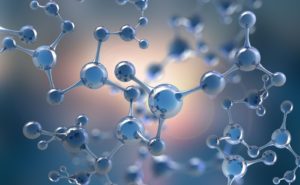APPLICATIONS OF TECHNOLOGY:
- Catalysis for electrochemical CO2 reduction
- Sustainable synthesis of carbon products
BENEFITS:
Highly productive catalysis, featuring:
- First molecular catalyst to exhibit electronic delocalization
- Over 90% reaction selectivity
- Turnover frequencies of 100,000 s-1 at low overpotentials
- No degradation over 20 hours
BACKGROUND:
The reduction of carbon dioxide (CO2) provides sustainable pathways for the synthesis of valuable products, but many current methods suffer from high overpotential, low current efficiency, low selectivity, and/or poor catalyst stability. Among different types of catalysts, heterogeneous and biological catalysts exhibit a high degree of electronic delocalization, which minimizes overpotential and maximizes reaction selectivity over competing reaction pathways. In turn, molecular catalysts offer significant advantages over biological and heterogeneous catalysts due to their small sizes, and their ability to be tuned with atomic precision. Combining the advantages of both types of catalysts in a molecular catalyst could provide electronic delocalization that enables higher efficiency.
TECHNOLOGY OVERVIEW:
Researchers at Berkeley Lab have developed an iron-based molecular catalyst that combines the small size and tunability of molecular catalysts with the electron delocalization properties of biological catalysts. This feat is a result of strong metal-ligand exchange coupling, which drives the electrochemical reduction of CO2 to CO with over 90% selectivity and turnover frequencies of 100,000 s-1 at low overpotentials. In addition, this molecular catalyst shows no degradation over 20 hours, and enables homogeneous CO2 reduction catalysis in water without compromising reaction selectivity.
This invention demonstrates the ability to create molecular compounds with strong exchange coupling between ligands and metal centers, which will enable control over the density and arrangement of functional active sites. In addition, molecular compounds represent a desirable strategy for lowering energy barriers in electrochemical catalysis.
This process for electrochemical CO2 reduction can be dispersed in water, enabling catalysis in a 3D volume instead of the traditional 2D surface and therefore promising more production from a physical area.
DEVELOPMENT STAGE: Proven principle
RELATED TECHNOLOGIES:
Nanoparticle Catalysts for Carbon Dioxide Reduction 2017-003
PRINCIPAL INVESTIGATORS: Jeffrey R. Long, Christopher J. Chang, Martin Head-Gordon, Matthias Loipersberger, Jeffrey Derrick
STATUS: Patent pending
OPPORTUNITIES: Available for licensing or collaborative research
